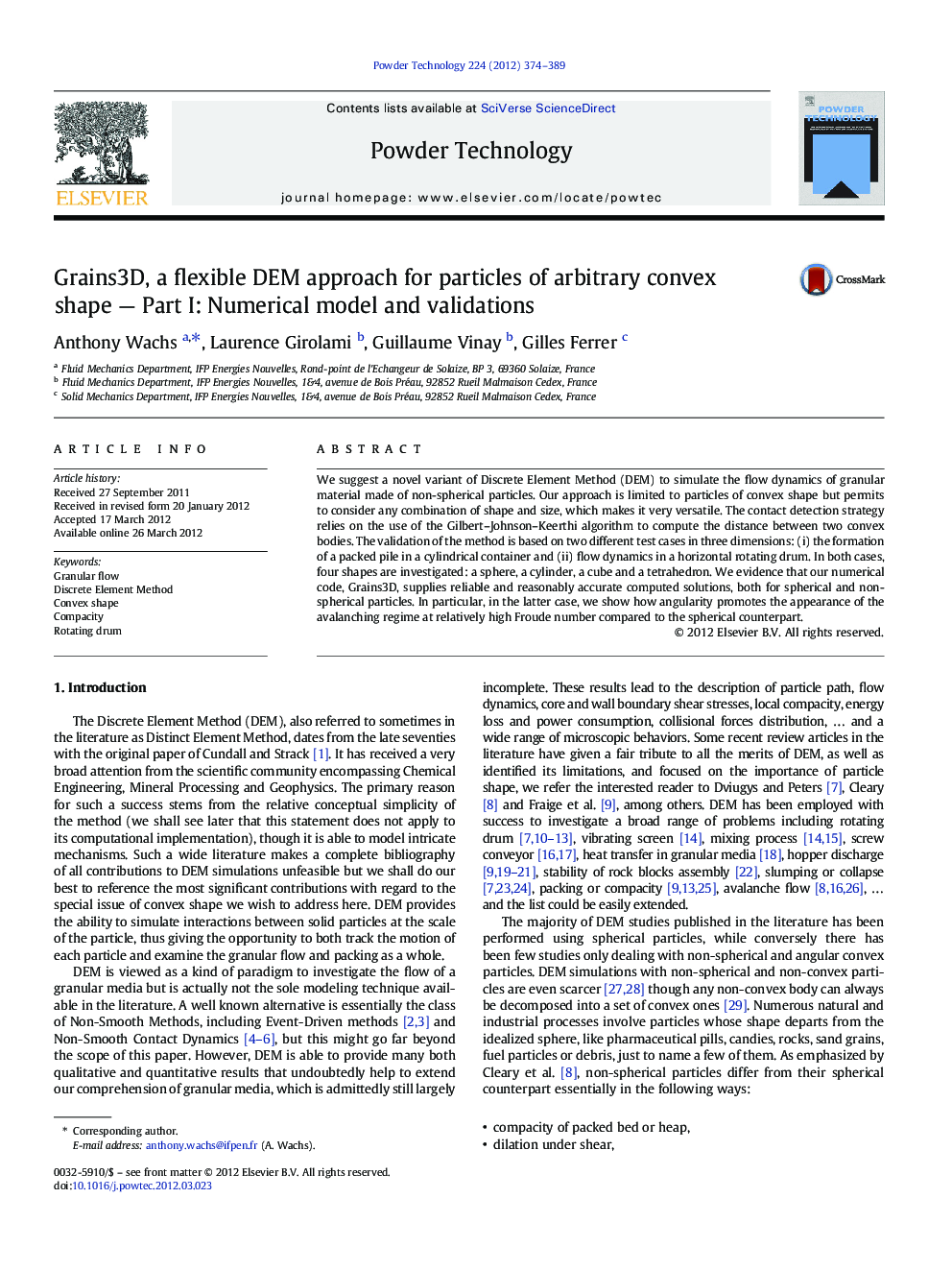| Article ID | Journal | Published Year | Pages | File Type |
|---|---|---|---|---|
| 237200 | Powder Technology | 2012 | 16 Pages |
We suggest a novel variant of Discrete Element Method (DEM) to simulate the flow dynamics of granular material made of non-spherical particles. Our approach is limited to particles of convex shape but permits to consider any combination of shape and size, which makes it very versatile. The contact detection strategy relies on the use of the Gilbert–Johnson–Keerthi algorithm to compute the distance between two convex bodies. The validation of the method is based on two different test cases in three dimensions: (i) the formation of a packed pile in a cylindrical container and (ii) flow dynamics in a horizontal rotating drum. In both cases, four shapes are investigated: a sphere, a cylinder, a cube and a tetrahedron. We evidence that our numerical code, Grains3D, supplies reliable and reasonably accurate computed solutions, both for spherical and non-spherical particles. In particular, in the latter case, we show how angularity promotes the appearance of the avalanching regime at relatively high Froude number compared to the spherical counterpart.
Graphical abstractWe suggest a novel variant of Discrete Element Method (DEM) to simulate the flow dynamics of granular material made of non-spherical particles. Our approach is limited to particles of convex shape but permits to consider any combination of shape and size, which makes it very versatile.Figure optionsDownload full-size imageDownload as PowerPoint slideHighlights► Novel DEM for granular material made of arbitrary convex shape. ► Contact detection strategy based on the Gilbert–Johnson–Keerthi algorithm. ► New results on the flow dynamics of spheres, cylinders, cubes and tetrahedra.
